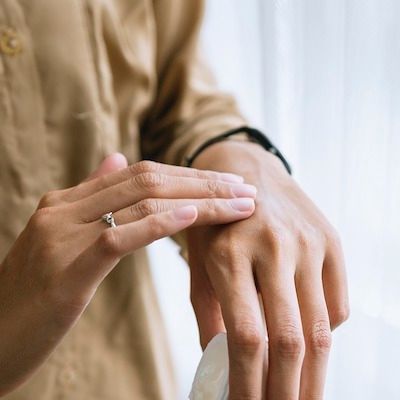News
Article
LIGHTSITE III: Photobiomodulation Slows Onset of Geographic Atrophy in Dry AMD
Author(s):
Key Takeaways
- Photobiomodulation significantly reduced vision loss and GA onset in dry AMD over 24 months, with a 53% and 73% reduction, respectively.
- The LIGHTSITE III trial showed significant BCVA improvements, with a mean gain of 5.9 letters at 24 months, compared to sham treatment.
Multiwavelength photobiomodulation significantly lowered the risk of vision loss and geographic atrophy in eyes with dry age-related macular degeneration.
Credit: Retina-Vitreous Associates Medical Group

Multiwavelength photobiomodulation significantly lowered the likelihood of vision loss and the onset of geographic atrophy (GA) in eyes with dry age-related macular degeneration (AMD), according to new findings.
These data, presented at the 128th Annual American Academy of Ophthalmology (AAO) Meeting, showed photobiomodulation achieved an approximately 53% reduction in vision loss and 73% reduction in incident GA over a 24-month study period.
“Photobiomodulation offers a unique mechanism for dry AMD to maintain retinal health and slow AMD disease progression,” wrote the investigative team, led by David Boyer, MD, a senior partner at Retina-Vitreous Associates Medical Group.
Photobiomodulation uses low-level light to benefit retinal health. LIGHTSITE III, a double-masked, randomized, sham-controlled, parallel-group, multicenter trial, evaluated the safety and efficacy of photobiomodulation in 100 individuals (148 eyes) with dry AMD. Participants were treated with multiwavelength photobiomodulation (590, 660, and 850 nm) or sham treatment 3 times per week, delivered every 4 months over 24 months.
Among the study population, 105 eyes (71%) had intermediate AMD and 11 (7.4%) had late AMD. Most eyes at baseline (n = 79; 53.4%) had a best-corrected visual acuity (BCVA) ≥70 letters. For the analysis, a Cox proportional hazards model evaluated the time-to-event hazard ratio (HR) of BCVA loss >5 letters and the new onset of GA.
Upon analysis, LIGHTSITE III’s primary endpoint was met, as photobiomodulation exhibited a statistically significant difference in BCVA versus sham at Month 13 (P = .02) and Month 24 (P = .0015). Photobiomodulation also displayed evidence of improved and sustained BCVA, with a mean 5.4 letter gain from baseline at Month 13 (P <.0001) and a mean 5.9 letter gain from baseline at Month 24 (P <.0001).
Most study eyes experienced ≥1-line improvement in BCVA. At 24 months, 58.3% of eyes treated with photobiomodulation responded with a ≥5 letter gain, 18.7% responded with a ≥10 letter gain, and 5.5% responded with a ≥15 letter gain.
At the baseline, 30% of eyes had BCVA <70 letters and 70% had BCVA ≥70 letters. In the data, eyes with baseline letter scores between 61 and 70 letters experienced more robust increases in visual acuity after photobiomodulation, compared with those with baseline >70 letters.
Compared with sham, the results showed photobiomodulation achieved a statistically significant 53% reduction in the risk for BCVA letter loss (>5 letters) over 24 months (HR, 0.47; P <.02). Photobiomodulation also statistically significantly reduced the risk of new incident GA by 73% (HR, 0.27; P <.006) over 24 months, compared with sham.
Results at 24 months showed 12 of 50 (24%) sham-treated eyes experienced progression to incident GA, while only 6 of 87 (6.8%) of photobiomodulation-treated eyes progressed to GA. The occurrence of new GA was significantly higher in the sham-treated group than in the photobiomodulation group (odds ratio [OR], 4.2; P = .007).
Photobiomodulation also demonstrated a reduction in drusen volume growth, compared with sham, and exhibited a favorable safety profile with no sign of phototoxicity. Boyer and colleagues indicated no deterioration on other evaluated visual outcomes, including contrast sensitivity, low-luminance BCVA, Radner reading, and color vision.
“The LIGHTSITE IIIB extension study is currently underway and will extend these findings in an open-label design through 13 months (4 additional Valeda photobiomodulation Tx series) with National Eye Institute (NEI) support,” investigators wrote.
References
Boyer D, Gonzalez V, Lad EM, Rosen R, et al. Multiwavelength Photobiomodulation Significant Reduces Risk for Vision Loss and Onset of Geographic Atrophy in Dry AMD. Poster presented at American Academy of Ophthalmology (AAO) 2024 Meeting. Chicago, Illinois. October 18-21, 2024.





